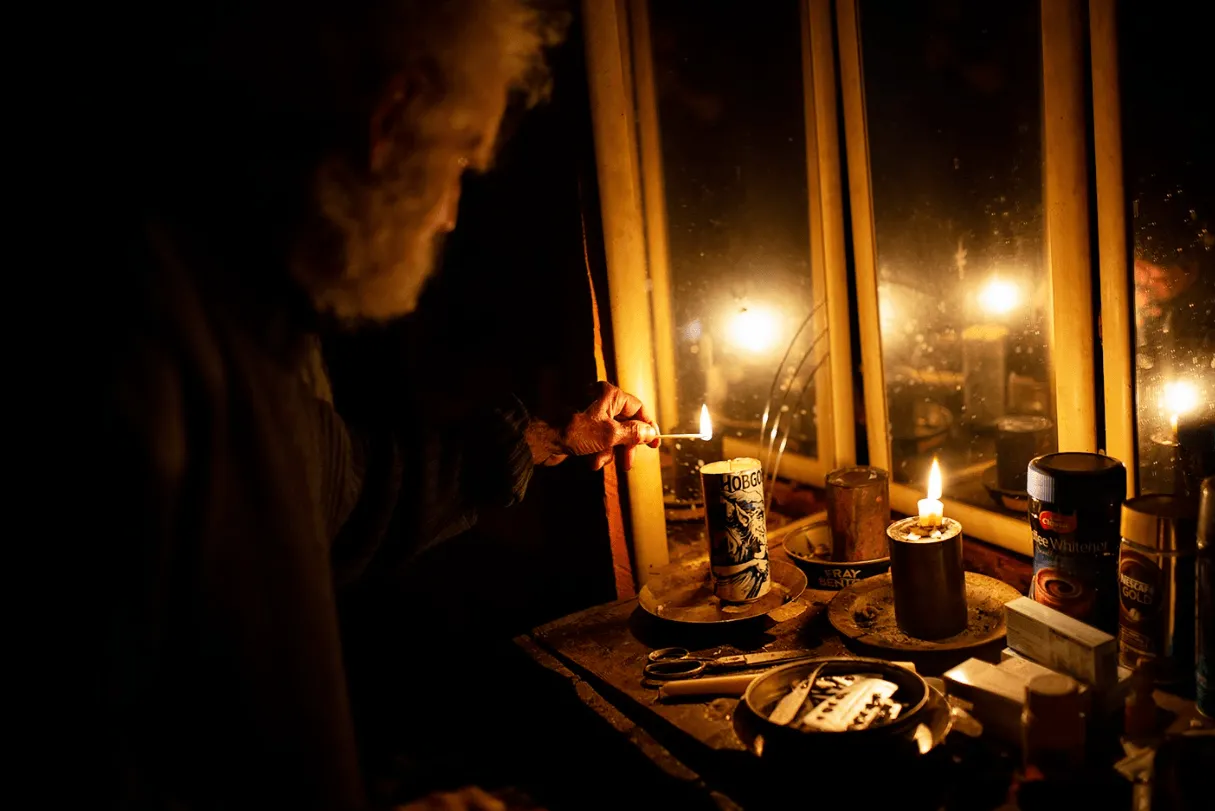The documentary “The Hermit of Treig” extends an invitation into a life deliberately unmoored from the societal current. We meet Ken Smith, a figure etched by time and landscape, who for forty years has resided in a self-hewn log cabin nestled by the remote Loch Treig in the Scottish Highlands.
Here, the cartography of common existence dissolves; no roads pave the way, no tendrils of the electrical grid or municipal water reach this solitary domain. The film, at its outset, appears as a quiet observation of this radical departure, a portrait of a man enmeshed with a wild, indifferent expanse, his existence a question whispered against the wind.
A Bastion Forged from Scars and Sapwood
Ken Smith emerges not merely as an eccentric, but as a man who has consciously authored his own terms for being. His bright, bird-like eyes survey a kingdom of his own making, his articulation a surprising counterpoint to the untamed thicket of his beard.
This retreat was no whim, but a pilgrimage born from the crucible of trauma – a brutal assault that left him comatose, shattering his trust in a world lived on others’ stipulations. His earlier wanderings in the vast Canadian Yukon seem now a prelude to this ultimate severance.
Daily life in his Highland sanctuary is a litany of primal skills: the raising of his cabin from the forest’s yield, the patient pursuit of fish from the loch, the coaxing of sustenance from a small plot of earth, the alchemical transformation of birch sap into potent wine.
His hands, gnarled as ancient tree roots, tend to these tasks, each action a quiet rebellion. He photographs the fleeting moments of light and life with an old Zenit, its lens a conduit for his reverence, his journals filled with a tiny, precise script – an archive of solitude, a minimal imprint on an earth that has profoundly shaped him.
The Observer Observed: Nature’s Gaze and a Shared Silence
Director Lizzie MacKenzie’s camera does not so much intrude as it does bear witness, her approach marked by a palpable compassion that avoids the pitfalls of judgment. Ken Smith is presented with a stark humanism, his eccentricities and vulnerabilities laid bare.
A seven-year acquaintance preceded the agreement to film, suggesting a slow-blooming trust, a space where the subject retains a measure of authorship over his own narrative. The cinematography breathes with the Highlands; light bounces from the loch’s surface, ancient melodies thread through the sounds of wind and water, and the hand-held perspective fosters an unsettling intimacy.
We are shown the majesty, yes, but also the inherent harshness of this chosen isolation. A yellow rose, caressed by torchlight, then recounted with the night’s memory already lost to him, becomes a potent symbol—beauty perceived at the edge of forgetting, a fleeting moment captured by the lens before dissolving into the personal abyss. The visual storytelling paints a stark tableau of his elemental life, each frame a testament to a profound, perhaps unsettling, dialogue between man and wilderness.
The Slow Erosion of a Self-Made World
The fierce independence that defines Ken Smith’s existence inevitably collides with the inexorable tides of age and corporeal decay. The film unflinchingly documents the fissures appearing in his carefully constructed redoubt. A stroke descends, fracturing memory, distorting vision into a kaleidoscope of “pretty” colours that mock his previous clarity.
The loss of his original cabin to fire, though he was spared, serves as another memento of life’s precariousness. How sustainable is this solitary vigil when the body itself becomes an unreliable ally? Concern from the outside world materializes in rangers who deliver supplies, a state pension a fragile tether to the society he forsook, a radio transmitter a daily signal against the encroaching silence.
Yet, Ken confronts this erosion with a stoicism that borders on the profound, his pronouncements on mortality simple, direct. His plan for eighty gallons of homemade wine to fuel his funeral party is less a morbid jest than a final act of unconventional communion. His resilience is not a denial of the void, but an acceptance of its proximity, his pursuit of spiritual contentment a stark counter-narrative to material ease.
The Hermit of Treig premiered at the Glasgow Film Festival on March 5, 2022, and was released commercially on March 25, 2022.
Full Credits
Director: Lizzie MacKenzie
Writer: Ken Smith
Producers: Naomi Spiro, Lizzie MacKenzie
Executive Producers: Robbie Fraser, Amy Hardie, Benjamin Taylor, Mark Thomas, Louise Thornton, Lisa Marie Russo, Jane Ray
Cast: Ken Smith
Director of Photography (Cinematographers): Lizzie MacKenzie, Troy Edige
Editors: Kieran Gosney, Ling Lee
Composers: Cameron McLellan, Mischa Stevens
The Review
The Hermit of Treig
"The Hermit of Treig" offers a profoundly resonant immersion into a life deliberately etched against the grain of convention. It is a stark, beautifully rendered meditation on solitude, resilience, and the quiet war waged against oblivion at the fringes of the human and natural worlds, leaving an indelible mark on the viewer's contemplation of existence.
PROS
- A deeply compelling portrait of radical self-determination.
- Lyrical cinematography that captures both the sublime and the severe.
- Unflinching yet compassionate exploration of aging, memory, and mortality.
- Rich with quiet philosophical inquiry into the nature of a meaningful life.
CONS
- The deliberate, unhurried pacing demands patient observation.
- Its inherent melancholy and existential focus may prove intensely somber for some.
- Offers few easy answers, lingering instead in the ambiguity of its subject's choices.


















































